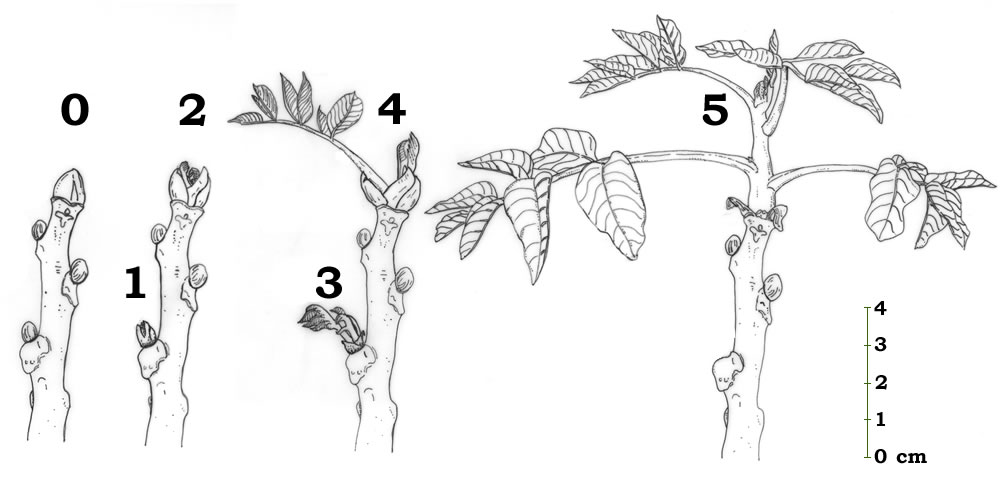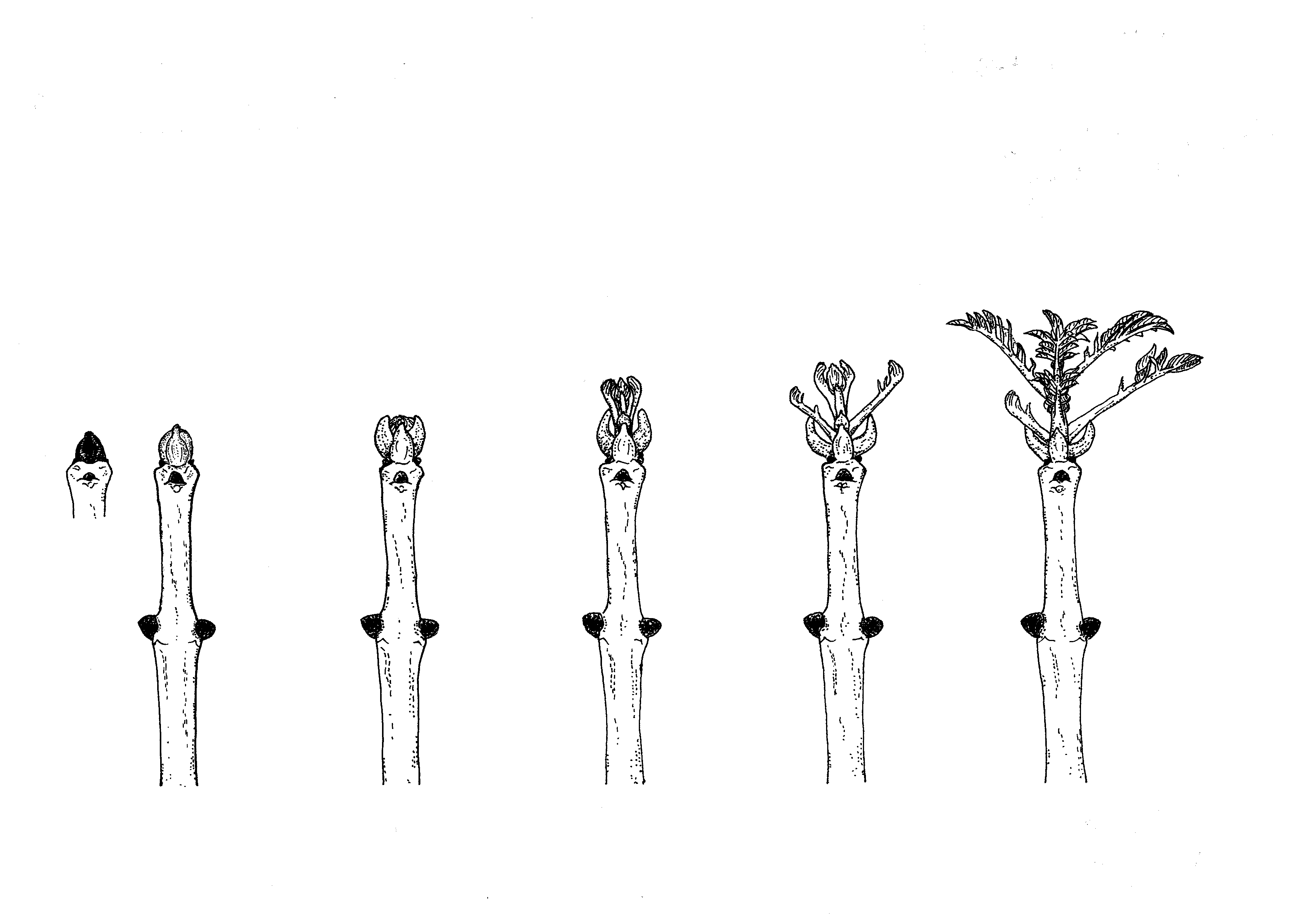It has been the warmest Spring for 60 years in the UK but it’s the time of year again when most gardeners will be watching out for a late Spring frost, hoping that they can protect their tender plants. Horticulturists are well aware of the terrible financial impact of frost on the flowering of apples and pears, where a whole year’s potential crop can be killed off. In forestry we’ve taken longer to get serious about frost.
Study of the timing of events in plants is known as phenology. For several years I undertook research into the flushing (the phenology of spring leaf burst) for two of our most sensitive tree species: ash Fraxinus excelsior and common walnut Juglans regia.
Unlike the plants in a garden that can be moved to a greenhouse or protected with fleece material, the trees in a forest cannot be protected so immediately. However the forester is not powerless. There are practical silvicultural steps that can be taken to match carefully a species to its site; such as altitude, aspect, and micro features (e.g. avoiding frost hollows). Perhaps the greatest potential advantage can be realised through genetic selection: using planting stock that have been selected to be late flushing – reducing the likelihood of frost damage as their buds will break later in the Spring.

I made these drawings to illustrate scientific scoring systems that I had developed for use in the field to assess the phenological development of different trees (progenies or provenances) in trials.

Foresters have ignored phenology at great cost in the past. Southern beech Nothofagus species were introduced to Britain in the 1950s with some excitement due to their fast growth and useful timber. Field trials and some commercial plantations of roble beech and rauli beech looked promising for a number of years until several cold periods devastated hundreds of hectares. Why? The seed collectors for these plantations had gone to the wrong places in Chile to collect seed. Had they considered better the phenological aspects, these promising species may by now have been more widely adopted.
Ignorance of phenology was also prevalent for several decades when the cheapest tree seed was sourced from Eastern Europe and imported into the UK. These origins were often not appropriate for the UK and I have seen numerous plantations of ash with multiple forks, established during the 1980s and 1990s. The impact is significant as these trees will never produce a valuable crop unless the owner repeatedly visits the trees to apply corrective pruning – and this costs time and money.
Gabriel Hemery
 This work is licensed under a Creative Commons Attribution- NonCommercial- NoDerivs 3.0 United States License.
This work is licensed under a Creative Commons Attribution- NonCommercial- NoDerivs 3.0 United States License.

Hi,
My name is Matthew Castillo. I am an intern at the Arboretum in Flagstaff, AZ. I am currently working on a project creating an interpretive sign talking about phenology. The photo you have in your article Phenology and Frost which is the Walnut Phenology and a flushing score is a really good photo and would love to use it for this project. Do you have property rights over that photo and if you do may I use it for this project? If not who does own property rights over that photo and what is their contact information? I hope to hear from you soon.
Thank you,
Matthew Castillo
Hi Matthew, and thanks for your enquiry. Yes the walnut flushing score is one that I developed, I completed the artwork (pen and ink), and the image is my copyright. You can contact me using the feedback form under ‘contact’ found in the main navigation bar.